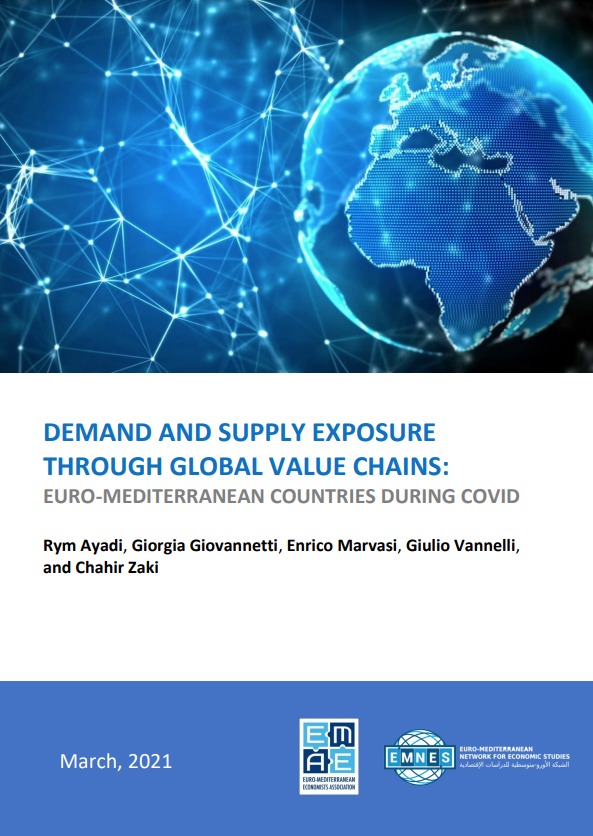
This paper tries to examine how the COVID-19 shock affects different countries through their regional integration and their exposure to Global Value Chains (GVCs). Using input-output tables (EORA 2016), our contribution is threefold. First, building on Pahl et al. (2021), we conceptually revise the approaches to analyse input-output relationships.
In particular, we underline the difference between the bilateral flow of value-added and trade and distinguish between the producers and consumers of value-added. Second, we distinguish between the supply and demand channels through which these countries can be affected by the disruptions in GVCs. Third, we apply this empirical exercise on an understudied region, namely the Mediterranean region that is characterised by its involvement in several trade agreements that might boost their integration into GVCs.
Our main findings show that, first, most of the countries have relatively larger backward GVC linkages than forward ones. Second, on the northern shore of the Mediterranean, Italy and France are net suppliers of value added since they produce more value-added absorbed abroad than the foreign value-added they consume. Third, on the Southern shore, Tunisia is the most integrated in GVCs but is also a net consumer of foreign value added. Morocco participates in GVCs but mainly in upstream segments. In contrast, Jordan followed by Egypt, are less involved in GVCs. Fourth, our results also highlight the limited integration between Southern shore partners, whose integration is almost completely driven by linkages with Southern European developed countries. This is why Jordan is much less affected by the shock than Tunisia and Morocco.





